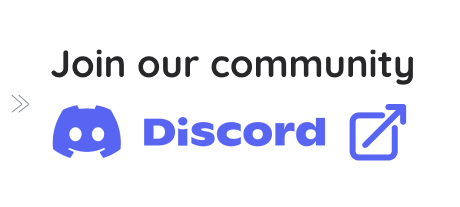What is ahead for AI and ChatGPT: A non-technical overview of AI Agents and LangChain
Artificial intelligence (AI) has been making headlines and has rapidly evolved in recent years. At the forefront of this AI revolution is ChatGPT, the language model that has taken the world by storm. With a staggering 1.16 billion users, ChatGPT has shattered records by crossing the 1 million user mark within just 5 days of its launch — a feat that has never been achieved before.
The pace of evolution in the AI and language model space is simply mind-blowing, leaving many of us stunned by the sheer speed of progress. However, despite the enormous strides made in this field, there is a lack of good articles that provide a comprehensive yet simple overview of the current state of AI and Large Language Models (LLM). So in this blog post, we’ll be reviewing that space, more specifically two technology primitives at the forefront: Agents and LangChain. Keep reading the following non-technical overview to structure your understanding and thinking about AI.
About Large Language Models (LLMs)
LLMs are a sort of AI system that does NLP using deep learning techniques and large datasets. These models can comprehend, summarize, generate text, and forecast new information. GPT-4 (OpenAI), Bloom (Hugging Face), and OPT-IML (Meta) are some of the most well-known LLMs. For example, OpenAI has published four LLMs — Davinci, Ada, Curie, and Babbage — with each model tailored for a certain job. Davinci, for example, is the most adaptable and powerful model, capable of handling complicated issues and completing several jobs with less instructions. Ada is the quickest and least expensive model, and it is best suited for less sophisticated jobs. The future of LLMs is case-specific.
ChatGPT (think of it as an OpenAI consumer-facing product/interface) has been a huge success. Based on past data, it predicts the next logical word in a phrase using LLMs. It is, in other words, a word prediction engine. However, it's important to emphasize that ChatGPT only has access to historical data, and its forecasts are based on that. Some of these constraints are, in fact, fueling the rapid innovation in this sector.
In general, the democratization of open-source technology has made advanced models more accessible to the general public. Previously prohibitively expensive models are now accessible for a few hundred dollars, making commercial applications more realistic. Furthermore, customers can use current LLMs to train more customized models that are tailored to their requirements. For example, if you want to create an LLM in finance, you must supply it with essential data. Despite advances in machine learning, LLMs still require human monitoring and training because the model's quality is reliant on the data it is fed.
The well-known financial adage "garbage in, garbage out" also refers to how ChatGPT and AI function in general. We realize, just like we do in real life, that the quality of AI's output is determined on the quality of the questions and orders (called prompts) we offer it. That's why startups like PromptBase have created a marketplace to allow users monetize their prompts, lowering the rate of adoption while enhancing output quality. New tech basic is becoming crucial in the freshly growing subject of "AI prompting."
Langchain and AI Agents
AI Agents and LangChain are two critical technologies guiding the progress and practical use of LLM.
AI Agents
These are highly specified programs that can work alone or with minimal human interaction and are capable of learning from their surroundings and improving their performance over time. The AI Agents interact with OpenAI's APIs to produce a response and return it to you in connection to the initial question. They aid in the incorporation of more content, hence expanding the possibilities of LLMs. LLMs are used by agents to decide what actions to do, and the process is packed into a logical loop of activity. Consider the two to have a highly synergistic relationship.
Some of the most disruptive AI agents on the market right now are:
AutoGPT
As the name implies, AutoGPT is an attempt to make AI self-sufficient. It achieves a given objective by breaking it down into sub-tasks and employing numerous web tools in an autonomous loop using OpenAI's GPT-4 or GPT-3.5 APIs. This application is one of the first to use GPT-4 to conduct independent activities. AutoGPT can "autonomously" conduct activities such as X and Y due to its capacity to communicate with software and services online. To utilize AutoGPT, a user just tells it their objective, and the bot uses GPT-3.5 and GPT-4, as well as many programs, to carry out every step required to reach the goal.
AutoGPT, in contrast to chatbot-oriented AI models, can communicate with applications, software, and services both online and locally, automating multi-step tasks that would have required back-and-forth prompting. If AutoGPT experiences difficulties or is unable to complete a job, it will generate new prompts to assist it in navigating the problem and determining the right next actions. Excellent coverage of AutoGPT is available here.
BabyAGI
It was released just a few weeks ago and is based on the LangChain framework. If you give/define a target, the agent can provide a set of prompts to help you reach that goal. In essence, the AI thinks for you. It is capable of acting on its own. You may have heard of a Chinese corporation that is totally governed by artificial intelligence, with Baby AGI functioning as the prompt generator. Baby AGI may also be used to produce pictures in conjunction with other AI technologies such as DADI.
The fundamental issue with today's agents is that they are sluggish, costly, and inefficient. But, as with ChatGPT, they will only become better from here.
LangChain
Another open-source software development platform that will impact enterprises is LangChain. It makes it easier for AI developers to create LLM-based applications by allowing them to integrate LLMs like GPT-4 with other sources of computation and data, hence enhancing the capabilities of ChatGPT and other LLMs. LangChain works as an orchestrator across language models, routing specific tasks to the best available model, allowing developers to design highly customized capabilities for their applications. Improved summarisation skills for massive data sets are one example, as is sophisticated document analysis.
LangChain selects the optimum model to respond a prompt for end users. If the AI does not have the required data, it will instruct a specific agent to locate it.
The future of business
The ramifications of AI Agents and LangChain are considerable, and the prospects for the near future are fascinating. We predict three types of enterprises developing in the near future:
Infrastructure-as-a-Service (IaaS)
- Database management: Traditional database companies (such as SQL and MongoDB) are not designed to hold vectors this large. New businesses are being pushed to overcome this problem. Example: MILVUS
- Memory management: a key concept for AutoGPT. Short-term memory can store up to 64k words but companies are trying to give it long-term memory. Example: Weaviate
- Prompting: Prompt engineers are now the most paid occupations in technology. However, there is a whole new opportunity in the administration, optimization, and serialization of prompts. Example: Prompstack
AI-as-a-Service
Connecting LLM with corporate data (e.g., customer or marketing data) unlocks various possible use cases from a commercial standpoint:
- Finance: Automating internal financial statement analysis and providing significant company insights.
- Customer service: Increasing client satisfaction through phone transcriptions and summaries.
- Marketing: Improving targeting by automating customer data analysis and creating useful customer data insights.
- HR: significantly enhancing knowledge collecting, sharing, and discovery for employee onboarding. As knowledge becomes more open, organizations will become less reliant on their personnel.
AI in consumer technology
- AI assistants: we will be able to carry out any difficult command, such as booking you the best airfare based on various criteria or paying your bills.
- Presentations: strong programs that can assist you in creating any presentation, visual assistance, and so on.
- Personal Finances: Wealth management services will become more widely available, allowing people to better manage their finances, save money, and accumulate wealth.
- Coding: will become more mechanized and democratized in society, and anyone will be able to create their own apps, perhaps benefiting the creative economy.
In conclusion, the rapid development of AI has led to the emergence of LLMs like ChatGPT that have revolutionized the field. The democratization of open-source technology has made advanced models more accessible, and customers can use current LLMs to train more customized models tailored to their requirements. However, LLMs still require human monitoring and training to ensure their quality is reliant on the data they are fed. LangChain and AI agents, like AutoGPT and BabyAGI, are guiding the progress and practical use of LLMs, and their synergistic relationship is crucial. These technologies have the potential to be the next big thing in the AI industry and will likely continue to evolve at a breakneck pace.
If you want to join the incredible AI race, be part of Worldwide AI Hackathon and bring your innovative ideas to life!










